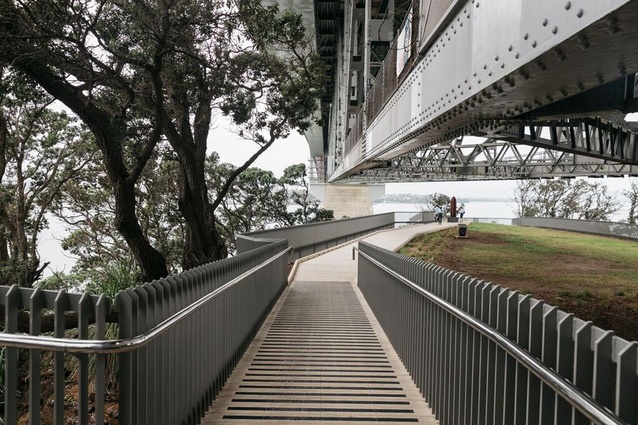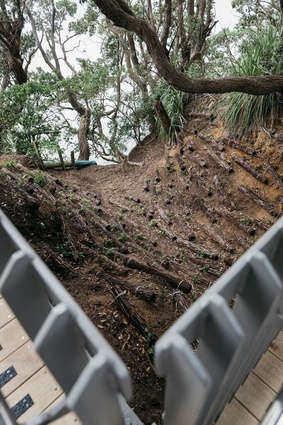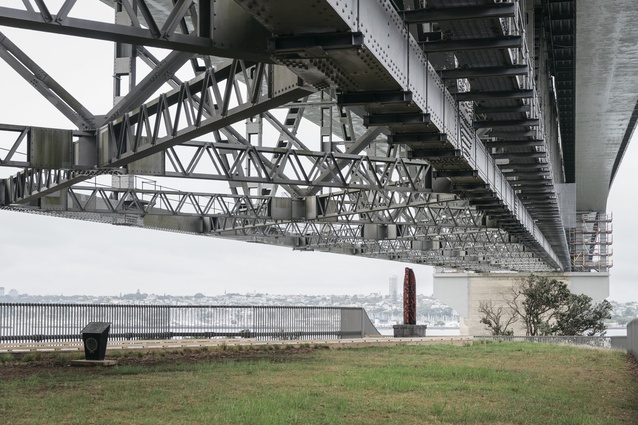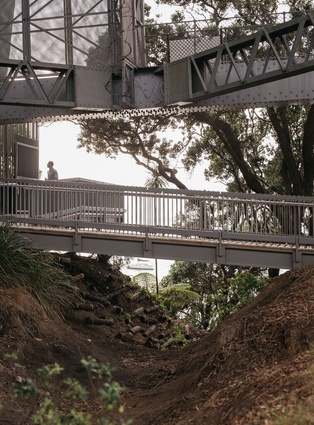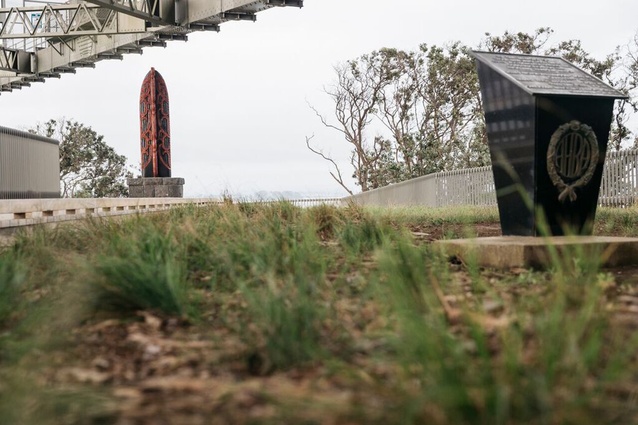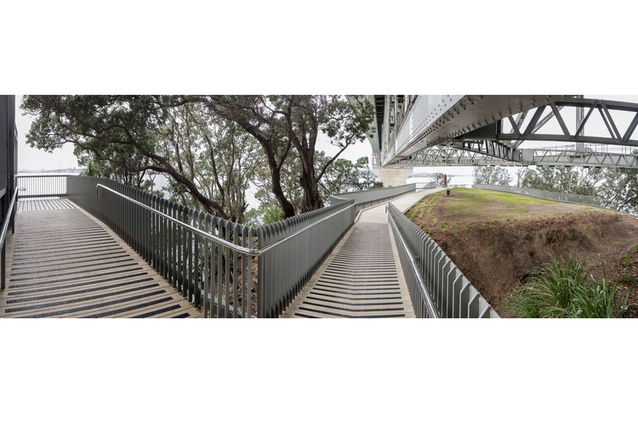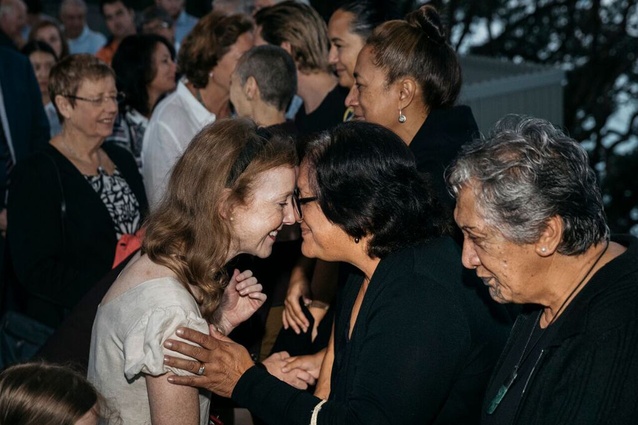Diamond in the rough: Te Onewa Pa
Boffa Miskell has breathed new life into a neglected pa site with incredible views, just under the Auckland Harbour Bridge.
In pre-European times, Te Onewa pa site was a stronghold of great strategic importance. But in recent memory, it has been a bit of neglected land underneath the northern end of the Auckland Harbour bridge.
Now, after an opening ceremony attended by Transport Minister Philip Twyford, the rehabilitated Te Onewa Pa/Stokes Point is a gem waiting to be discovered.
Polishing this diamond in the rough has been a decade-long, three-stage process, which began as part of the box girder (‘clip-ons’) strengthening works.
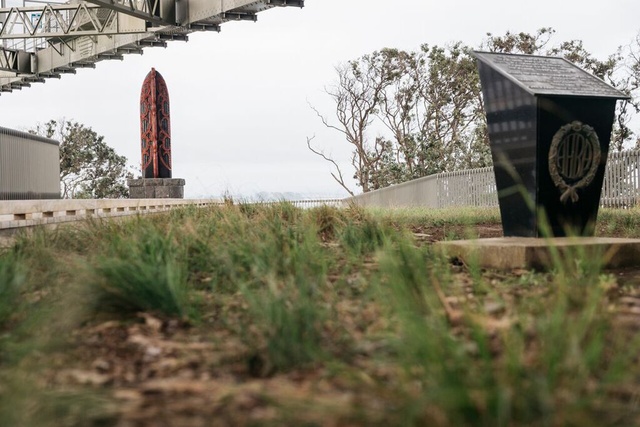
“Work was going on day and night,” says landscape architect Cathy Challinor of Boffa Miskell. “NZTA asked us to help find a way of giving something back to the community living near the northern abutment of the bridge.”
Over time, the project became a catalyst for increased engagement and relationship-building between NZTA, local iwi, Auckland Council, the Local Board and residents. Commitment grew on all sides for a comprehensive solution.
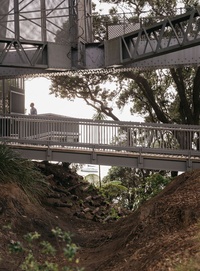
Stage One and Two comprised the award-winning Trestle Leg Series – excerpts of poetry and prose by eight New Zealanders with links to the harbour and the North Shore wrapped around eight of the supports – and the upgrade and enhancement of the natural and cultural landmarks that were altered during construction of the bridge. But, there was more to be done to the former pa site.
“Ten years ago, you had to scramble down a hill and go through a fence, but once you did, the view was just unbelievable,” Challinor says. “It’s quite a small piece of land, and the cliffs drop away, so there’s water all around you. The bridge overhead emphasises the wide horizon and creates a very intimate experience.”
The original landform had been significantly altered. Several iwi have connections to the place, but any kind of cultural or historic associations had been disregarded in the name of progress fifty years earlier. Input from tangata whenua and Heritage NZ helped determine three objectives – access, safety and celebration – that informed the design.
Now, a raised timber walkway and platform minimise disturbance to the much-traumatised earth and encourage visitors to stay on the path. A pedestrian bridge crosses the only remaining visible feature of the historical pa site – the defensive trench. The bridge is designed to sit above the ground, sparing it from further disturbance.
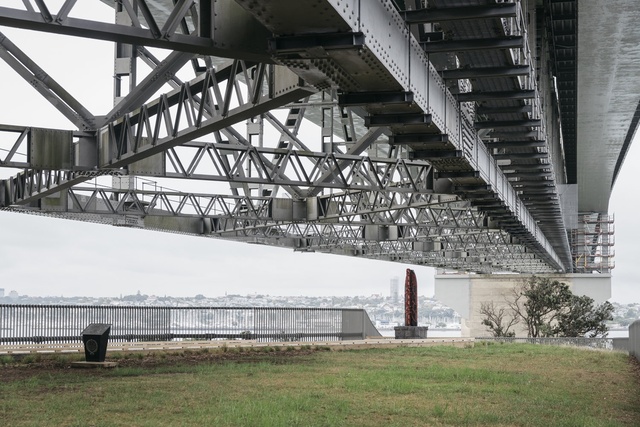
The new balustrade surrounding the site illustrates the level of care and compromise that stakeholders brought to the project, says Cathy Challinor. An old timber post-and-rail fence was removed and each of the existing post holes was individually drilled out. The sub-grade was tested to ensure the required strength from an engineering perspective, and a new fence was designed around those post-hole points.
“We didn’t disturb the land any more than it had been, but we still created a piece of structure that fulfilled our needs for safety.”
Similar care was taken with planting installation and erosion control. No additional topsoil could be added to the historic site, so ponga logs were used to stabilise the slopes and provide protection for native plants.
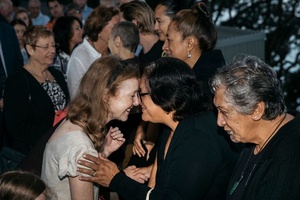
A pouwhenua carved from heart Totara by Reuben Kirkwood of Ngā Tai ki Tāmaki was revealed during the dawn blessing, and recognises the whakapapa of mana whenua. A memorial to workers who lost their lives during construction of the bridge remains nearby.
Challinor says that the project has achieved far more than its initial brief. “Ten years ago, it was quite distressing to see what had been done to the land, and it felt like we’d all turned our back to this spot. You wouldn’t know it existed. All the fencing said: ‘there’s nothing to see here – keep moving – go away’.
“Our goal was to find a way to allow people in while still protecting the land. We want mana whenua, and Auckland residents and visitors from all over to experience Auckland and the harbour from this amazing vantage point. Even installing the poetry on the trestle beams was about saying – ‘look, there’s a place here – come and see it’. From start to finish, this project has been about working together and rebuilding connections.”
This article first appeared on the Landscape Architecture Aotearoa website, which is published by the New Zealand Institute of Landscape Architects (NZILA).

